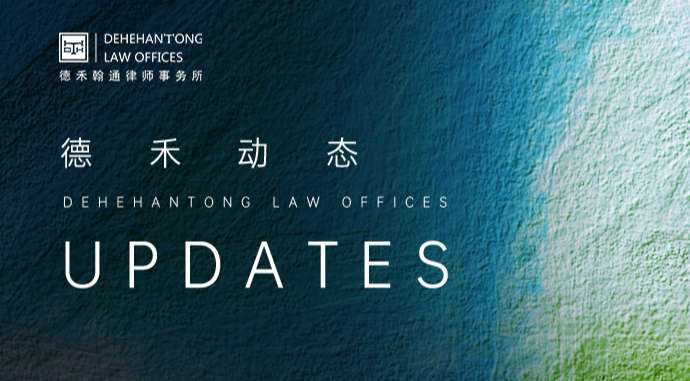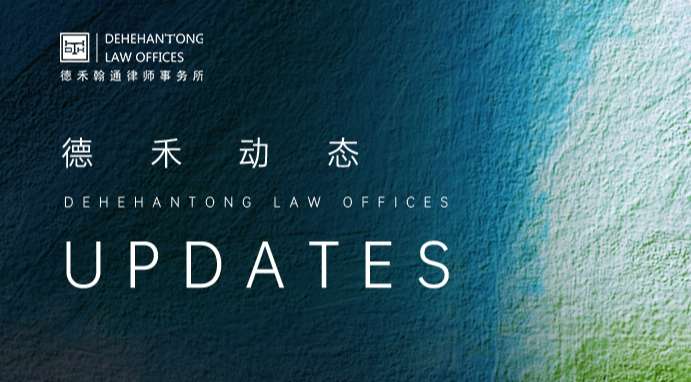Observation on ABS Dispute Resolution (Part One) - The Boundaries of the Manager's Liability from the Perspective of the Trust Law
During the National Two Sessions in March 2024, Judge Xiaoli Gao, the former head of the Civil Division II of the Supreme People's Court and currently the vice president of the Supreme People's Court, mentioned in an interview with the media that the Supreme People's Court will formulate judicial rules for disputes over asset-backed securities (ABS) to regulate some practical problems faced in judicial practice. [1]
ABS(Asset-backed securities, including credit asset-backed securities, enterprise asset-backed special plans, insurance asset-backed plans, non-financial enterprise asset-backed bills and other asset-backed securities, based on the common characteristics of different product transaction structures, hereinafter referred to as "ABS") as a low-cost financing tool, packages current illiquid assets as underlying assets and uses the future cash flows generated by these assets as repayment support. Through complex structured financing arrangements, it converts originally illiquid assets into freely tradable securities to achieve the financing goals of enterprises. In this process, various subjects such as investors, original rights holders, managers, and various intermediary institutions are involved in multiple stages including the selection, evaluation, transfer, and management of underlying assets, forming a complex web of legal relationships. Therefore, since the birth of the ABS transaction structure, there have been ongoing disputes regarding its legal application and liability determination.
Although relevant judicial interpretations and normative documents have not yet been issued, a large number of disputes arising from ABS still need to be resolved in practice. In response, the Financial and Securities Dispute Resolution Committee of Dehehantong Law Firm, based on practical experience, has launched a series of articles titled "Observations on the Resolution of ABS Disputes", exploring the paths to resolve ABS disputes from the perspectives of the Trust Law and the Securities Law.
This article is the first in the series "Observations on the Resolution of ABS Disputes" and will discuss the determination of the liability of managers from the perspective of the Trust Law.
01. An Exploration of the Application of the Trust Law to ABS.
1. The Legal Perspective Has Not Yet Clarified Whether ABS Is Subject to the Trust Law.
Regarding whether ABS is subject to the Trust Law, the current legal norms do not provide a clear conclusion.
The "Pilot Management Measures for Credit Asset Securitization" jointly issued by the former China Banking Regulatory Commission and the People's Bank of China in 2005 stipulates in Article 2: "Within the territory of China, when banking financial institutions act as originators, trust credit assets to trustees, and have trustees issue benefit securities in the form of asset-backed securities to investment institutions, and use the cash generated from the property to pay the returns of asset-backed securities, such structured financing activities shall be subject to these measures. Trustees shall, in accordance with these measures and the trust contract, respectively entrust loan service institutions, fund custodian institutions, securities registration and depository institutions, and other institutions providing services for securitization transactions to perform their respective duties. Trustees shall, within the limit of the trust property, undertake the obligation to pay the returns of asset-backed securities to investment institutions."
Although this normative document recognizes asset-backed securities as trust legal relationships, it only applies to credit asset-backed securities issued by banking financial institutions, and its scope of application is too narrow.
Article 88 of the "Minutes of the National Conference on Civil and Commercial Trials of the People's Courts" (hereinafter referred to as the "Nine Civil Minutes") of the Supreme People's Court points out: "According to the provisions of the 'Guiding Opinions on Regulating the Asset Management Business of Financial Institutions', if the asset management business carried out by other financial institutions constitutes a trust relationship, disputes between the parties shall be handled in accordance with the Trust Law and other relevant provisions."
However, ABS clearly does not fall under the asset management business as defined in the "Guiding Opinions on Regulating Asset Management Business of Financial Institutions", and thus there is no basis for directly arguing that ABS is subject to trust legal relations by citing the "Nine Civilian Minutes".
2. There are sufficient legal grounds for the application of the Trust Law to ABS.
The definition of "trust" in China's Trust Law is: "The act of a trustor entrusting his property rights to a trustee based on trust in the trustee, who then manages or disposes of the property in his own name according to the trustor's will for the benefit of the beneficiary or for a specific purpose."
In traditional collective fund trusts, investors, as the principal, directly entrust their funds to financial institutions such as trust companies to establish trust plans. At this time, the trust property is the investor's funds, and the financing party is merely the investment target of the trust plan and does not directly intervene in the internal structure of the trust plan. This model is a typical "fund trust".
However, in the common structure of ABS, the original rights holder, as the financing party, usually plays the role of the transaction initiator - the original rights holder entrusts the manager to set up an SPV and package specific assets into the SPV. At this time, the SPV is precisely a form of self-benefit trust, with the original rights holder as the trustor and beneficiary, and the manager playing the role of the trustee.
Subsequently, as the trust beneficiary rights can be divided and transferred, the SPV, as the vehicle for securitization, is split into standardized securities and issued to multiple investors. The process of investors subscribing to ABS is also the process of taking over the trust beneficiary rights from the original rights holder. The self-benefit trust thus turns into a benefit-for-others trust, and the subscription funds as the transaction consideration are transferred to the original rights holder.
At this point, the trust property is the underlying assets packaged into the SPV. The trustee achieves returns through the management of the underlying assets to meet the investment objectives of the investors, that is, the trust beneficiaries. Therefore, the ABS model can be regarded as "asset trust".
02.The Fiduciary Duty of Managers from the Perspective of the Trust Law.
The fiduciary duty is the core obligation of the trustee in the trust legal relationship. Given that the trustee has extensive discretion in managing affairs, to prevent the abuse of power, it is necessary to impose fiduciary duties to restrict the exercise of such discretion. In the ABS structure, the manager, who is entrusted to manage the underlying assets, should also bear the fiduciary duties under the Trust Law.
The legal nature of fiduciary duties
It is generally believed that fiduciary duties include the duty of loyalty and the duty of care. The duty of loyalty is the trustee's negative obligation, which requires the trustee to be faithful to the trust purpose and the interests of the beneficiaries and not to engage in any behavior that involves a conflict of interest. The duty of care, on the other hand, is the trustee's positive obligation, emphasizing that the trustee must manage the trust property with professional competence and prudence, striving to achieve the trust purpose and enhance the interests of the beneficiaries.
The fiduciary duty under the Trust Law is not limited to a contractual obligation, but it is usually based on a contractual relationship. First, in the ABS structure, investors assume the identity of trust beneficiaries by signing subscription documents with the manager, and a contractual legal relationship is naturally formed between the investor and the manager, with the manager's actions being bound by the terms of the contract. Secondly, due to the complexity of commercial activities and the abstract nature of fiduciary duties, the terms of the contract cannot comprehensively list the rights and obligations of all parties, nor can they establish a precise set of behavioral norms for the manager through pre-judgment. Therefore, fiduciary duty is more of a legal obligation, and when we emphasize that fiduciary duty is a legal obligation, its connotation not only refers to the fact that this obligation is stipulated by law, but more importantly, it refers to the restriction of the trustee's abuse of discretion through judicial intervention. [2]
The "Opinions on Several Issues Concerning the Trial of Civil Cases Involving Finance" (Jiumin Guiding Opinions) pointed out when discussing disputes over business trusts: "In disputes over actively managed trusts, the focus should be on examining whether the trustee has fulfilled its duties with due diligence and performed the legal or contractual obligations of prudent and effective management during the process of managing the entrusted property in accordance with the principle of 'entrusted by others, act in good faith for others'." This also acknowledges the dual nature of fiduciary duties as both legal and contractual obligations.
Based on this, when we determine whether the trustee has violated the fiduciary duty under the trust legal relationship, at least the following aspects should be comprehensively considered: the terms of the contract, the provisions of relevant laws and regulatory documents, the principle-based judgment and discretionary power at the judicial level.
2. The Embodiment of Fiduciary Duties in the ABS Structure.
As mentioned earlier, the determination of fiduciary duties should take into account multiple factors, but the contractual agreements and judicial discretion need to be judged on a case-by-case basis. Regarding the concretization of fiduciary duties in the ABS structure, the following can be initially sorted out from the regulatory documents formulated by the China Securities Regulatory Commission for the "enterprise asset securitization business", namely the "Administrative Provisions on Asset Securitization Business of Securities Companies and Subsidiaries of Fund Management Companies" (hereinafter referred to as the "Administrative Provisions on Asset Securitization Business"), the "Information Disclosure Guidelines for Asset Securitization Business of Securities Companies and Subsidiaries of Fund Management Companies" (hereinafter referred to as the "Information Disclosure Guidelines for Asset Securitization Business"), and the "Guidelines for Due Diligence Work of Asset Securitization Business of Securities Companies and Subsidiaries of Fund Management Companies" (hereinafter referred to as the "Guidelines for Due Diligence Work of Asset Securitization Business").
03.On the Determination of the Liability of Managers: Insights from the Case of N Bank v. H Securities Company.
In the case of N Bank v. H Securities Company, a contract dispute, which was first tried by the Second Intermediate People's Court of Beijing and then reviewed by the Higher People's Court of Beijing [3], the investor N Bank sued the manager H Securities Company for breach of contract regarding the X asset-backed securities special plan. As the lawsuit was filed in 2020, the ABS as a trust legal relationship had not yet been widely recognized in judicial practice, so the case was filed under the cause of action of contract dispute rather than business trust dispute; however, during the trial of the case, the court did not merely adhere to the contract terms but comprehensively determined the obligations and responsibilities of the manager based on the basic logic of fiduciary duties, which is quite instructive.
1. Basic case details.
In this case, Q Company, as the original rights holder, signed an "Asset Purchase Agreement" with H Securities Company, the manager. The agreement stipulates that H Securities Company will raise 500 million yuan (RMB, the same below) by setting up the X Asset-Backed Securities Special Plan to purchase the uncollected rent claims held by Q Company as the underlying assets. These assets correspond to a single lessee, Y Company's sale and leaseback contract, with a principal of 500 million yuan and an annual interest rate of 8.5%. Y Company provides a pledge guarantee for the rent claims with its 650 million yuan accounts receivable from the downstream state-owned enterprise Z Company. In this transaction structure, the pledge of accounts receivable serves as the core credit enhancement measure, and its underlying logic is the stable supply and sales relationship between Y Company and Z Company, and Z Company is a large state-owned enterprise. N Bank signed an "Asset-Backed Securities Subscription Agreement" with H Securities Company, subscribing to 100 million yuan of the senior securities with an expected annual yield of 6.3%.
Subsequently, during the existence of the X Special Plan, an early termination event was triggered and a default was announced. Later, it was verified that the 650 million yuan accounts receivable of Company Y from Company Z, which was used to provide pledge guarantee, was suspected of being fabricated.
Bank N, due to the inability to redeem the shares it holds, filed a lawsuit against Securities Company H in court, claiming that it violated the "Asset-Backed Securities Subscription Agreement" and other issuance documents, and demanding that it bear the liability for breach of contract.
2. Responsibility determination at the level of information disclosure obligations.
In this case, the legal representative of Company Y fabricated 650 million yuan of accounts receivable from Company Z by forging the latter's certificates and seals, and used this as a pledge guarantee for a 500 million yuan rent claim to enhance the credit of the X special plan involved. Based on this, the court ruled that the information on accounts receivable disclosed by H Securities in the ABS issuance documents was not true.
However, the inaccuracy of information disclosure does not necessarily imply that the manager has breached the fiduciary duty. It is still necessary to further determine whether the manager has committed any fault in the process of disclosing inaccurate information. That is, from the perspective of the duty of loyalty, whether the manager has been influenced by other interests and thus concealed or even deliberately fabricated the relevant information; from the perspective of the duty of care, whether the manager has conducted sufficient due diligence on the disclosed information and whether there are sufficient reasons to believe in the authenticity of such information.
3. Responsibility determination at the level of due diligence obligations.
According to Article 2 of the "Guidelines for Due Diligence in Asset Securitization Business", the due diligence work of the manager refers to the process in which they diligently and responsibly investigate the business participants and the underlying assets to be securitized through methods such as reviewing documents, conducting interviews, attending meetings, and on-site investigations, and have sufficient reasons to believe that the relevant issuance documents and information disclosure are true, accurate, and complete.
In this case, accounts receivable hold a special significance within the underlying assets. They not only serve as the ultimate source of funds for the asset-backed securities holders to obtain the main income but also represent the sole guarantee measure for the underlying assets, namely the rent claims. Therefore, the court holds that accounts receivable are of utmost importance in the underlying assets of this case and should be the primary consideration for the manager in deciding to establish a special plan, as well as the main factor for investors in making investment decisions.
The court held that, given the significance of accounts receivable, the administrator must diligently and responsibly conduct a thorough investigation into the accounts receivable and their pledges until they have sufficient reasons to believe that the accounts receivable and their pledge documents and information are true, accurate and complete. However, in this case, during the interviews with the so-called staff of Company Z, the administrator, H Securities Company, failed to verify the identities of the interviewees, the due diligence investigation draft interview records were incomplete, and it did not directly verify the authenticity of the contract texts corresponding to the accounts receivable. Moreover, apart from the interviews, H Securities Company did not adopt any other direct methods to investigate Company Z.
Therefore, the court held that the due diligence methods and investigation items of H Securities Company were not commensurate with the significance of the accounts receivable and their pledges. The information obtained from the investigation was insufficient for H Securities Company to be convinced of the authenticity of the accounts receivable and their pledges. Consequently, the court determined that H Securities Company had not conducted the necessary due diligence on the accounts receivable and their pledges.
From this, it can be seen that when the People's Court was hearing this case, it did not adhere strictly to the rights and obligations explicitly stipulated in the contract terms. Instead, it combined the provisions of the "Guidelines for Due Diligence in Asset Securitization Business" and proposed that the specific due diligence methods should be commensurate with the importance of the matters under investigation. This precisely indicates that H Securities Company, as the trustee, has a certain degree of discretion in the due diligence process, but the exercise of this discretion should be subject to the constraints of fiduciary duties, especially the duty of care.
4. Responsibility determination at the level of liquidation obligations.
When N Bank initiated the lawsuit, the X Special Plan had not yet been liquidated. H Securities Company thus argued that N Bank's losses had not yet materialized. However, the court held that the formation of N Bank's losses was not contingent upon the completion of the liquidation of the X Special Plan. The adverse consequences resulting from the subsequent litigation of the finance lease contract dispute caused by H Securities Company's breach of contract with N Bank and the delay in the liquidation of the special plan should not be borne by N Bank.
The rationality of this view lies in the fact that the failure of the X Special Plan to be liquidated smoothly was due to the default of the underlying assets, and the default of the underlying assets was precisely causally related to the failure of H Securities Company to fulfill its fiduciary duties. The damage consequences caused by the fault of H Securities Company should not be borne by N Bank. Therefore, in this case, the court directly ruled that H Securities Company should bear the liability for compensation to N Bank, compensating for the full loss of the principal of 100 million yuan and the corresponding income loss. Moreover, after H Securities Company fulfills its compensation obligation, it shall, within the limit of the actual compensation amount, obtain the right to the corresponding amount of assets that N Bank should receive in the liquidation of the X Special Plan.
04.Conclusion.
There are still a large number of issues that need to be explored and resolved in practice regarding the disputes over the application of law and the boundaries of liability arising from ABS disputes.
In the highly anticipated first national case of ABS securities fraud - the lawsuit of Y Bank against F Asset Management Company and other entities for securities fraud liability - the defendant, F Asset Management Company, raised a defense arguing that the relationship between the investor and the manager should be governed by trust law rather than securities law. In its first-instance judgment, the Shanghai Financial Court pointed out: "The manager, through securitization methods, splits the beneficial rights originally enjoyed by the original rights holder over the underlying assets into standardized and transferable beneficial rights shares and issues them to investors in the form of securities. Objectively, this enables investors to obtain beneficial rights shares. The trust relationship between the investor and the manager regarding the management of the underlying assets still exists, which is not inherently contradictory to the manager's entrusted issuance of securities." [4]
The view of the Shanghai Financial Court actually acknowledges the concurrence of trust legal relationship and securities legal relationship between investors and managers in ABS disputes. I am in full agreement with this. In the case of concurrence, the application of different legal relationships may lead to completely different determinations of the responsible parties and the rights and obligations of all parties. The second part of "Observation on the Resolution of ABS Disputes" will continue to explore new issues from the perspective of the Securities Law with you all. Please stay tuned.
Footnote:
[1] See: China Business Network, "Exclusive Interview with Gao Xiaoli, Director of the Civil Division II of the Supreme People's Court: Financial Trials Not Only Need to Properly Resolve Disputes According to Law, But Also Fulfill the Duty of Risk Prevention and Resolution".
[2] See: Zhao Lianhui, "On the Legal Nature of Fiduciary Duty", Peking University Law Review, Vol. 21, No. 1 (Total No. 40), pp. 62-86.
[3] See: Civil Judgment No. 141 of 2020 of the Second Intermediate People's Court of Beijing Municipality, Civil Judgment No. 533 of 2021 of the Higher People's Court of Beijing Municipality.
[4] See: Civil Judgment No. 1801 of 2020 of Shanghai Financial Court.
-
Prev:Key points Analysis series (2) of the Judicial Interpretation of Civil Disputes over Prepaid Consumption: Analysis of the reasons for differences between the draft and the formal provisions
-
Next:Securities Issuance of Securities Crime Part 2: Defense Strategy -- Key Points and Evidence Breakthrough (Part 1)
Recommended Information
-
UpdatesDehehantong, in collaboration with the School of Law of Shanghai Jiao Tong University (Kaiyuan Law School) and the Shanghai Association of the Blind, jointly launched the first event of the "Light on the Legal Path" public welfare legal education series.2025-04-08
-
UpdatesTwo new members have been added to the National Management Committee of Dehehantong.2025-04-02
-
UpdatesThe symposium on innovation and development of financial dispute resolution under the new situation and the unveiling ceremony of the Shanghai Financial and Securities Dispute Business Committee of Dehehantong were successfully held.2025-04-01
-
UpdatesHuang Chong, Party secretary and chairman of the Party Group of Xuhui District CPPCC, visited Dehehantong2025-03-31
-
UpdatesDehehantong and Hiways Jointly carry out exchanges and seminars on normative management and healthy development of law firms2025-03-26















